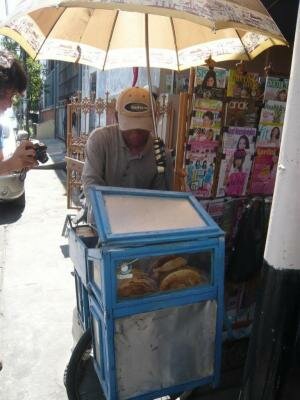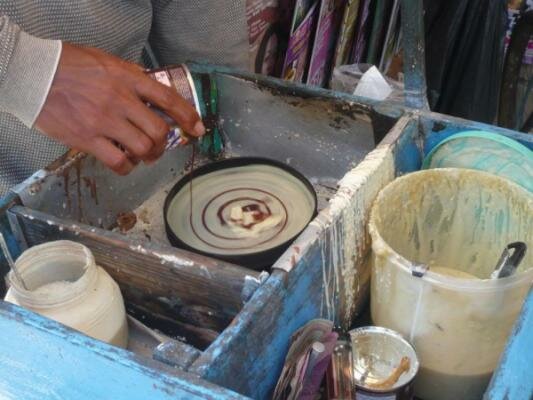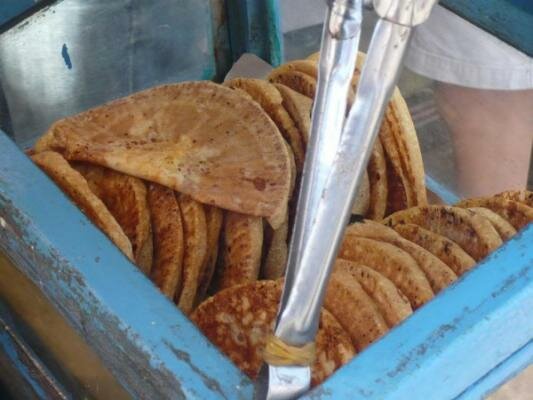Kue Leker: A Colonial Legacy
An Indonesian street snack harks back to the country's colonial past.
Street snacks in Indonesia are everywhere and are as varied as the number of islands in the nation (about 17,000).
The good thing about having out-of-the-country guests? I have an excuse to indulge in many of the street snacks. This kue leker cart was set up right in front of the spicy chicken place we went to for lunch, and since my brother said it was good, we got some.

Kue leker is almost like a crispy folded crepe, usually filled with chocolate and banana. It is supposedly one of the staple foods of my home town, Surabaya, although apparently people from a neighboring town, Lamongan, claim it’s theirs also. But Surabaya-ers will win by sheer number.
The origin of the name kue leker is not certain, but a likely explanation is that the word leker came from the Dutch word lekker which just means good or tasty. Kue simply means cake in Bahasa Indonesia, so if the first part is true then the term just means "tasty cake". The cake/crepe is made to order on a rotating hot pan while the guy pours chocolate syrup and plops banana slices down.

It seems quite likely that this dessert did originate during Dutch colonisation, right? I mean, it's practically a chocolate and banana crepe, rather European. And they did colonise us for 300 years! As the bottom is getting crispy, it's folded and flattened, distributing the fillings around. Eat it while it's fresh: hot and crispy.

They'll have some already made on display, but you can always ask for a freshly made one.
It's a simple dessert that's quick to make and hits the spot, just as street snacks should be.
Where it can be found:
In front of Ayam Penyet Bu Kris restaurant.
Kl.Tenggilis Utara no.1
Surabaya, Indonesia
This post was first published on Gourmet Pigs in April 2011.

















